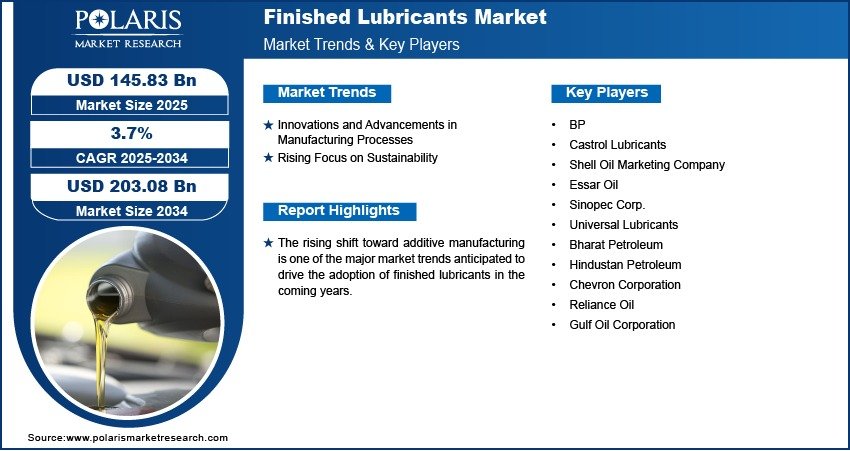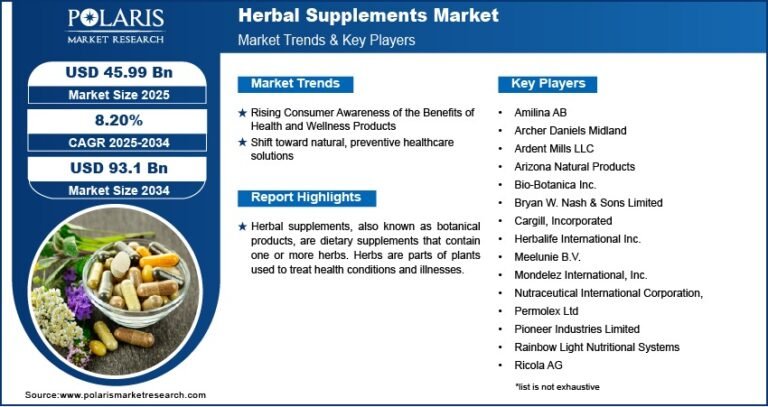Finished Lubricants Market Projected to Reach USD 203.08 Billion By 2034, Growing at a CAGR of 3.7%

The global Finished Lubricants market size was valued at USD 142.28 billion in 2024 and is projected to grow from USD 145.83 billion in 2025 to USD 203.08 billion by 2034 , exhibiting a Compound Annual Growth Rate (CAGR) of 3.7% during the forecast period from 2025 to 2034 .
- Rising Demand from Automotive and Industrial Sectors: The growth of the finished lubricants market is being driven by increasing demand from key sectors such as automotive, manufacturing, construction, and energy due to their essential role in reducing friction, wear, and heat generation in machinery.
- Shift Toward High-Performance Synthetic Lubricants: With growing emphasis on fuel efficiency and equipment longevity, there is a rising preference for synthetic and semi-synthetic lubricants that offer superior performance, longer drain intervals, and better protection under extreme conditions.
- Stringent Environmental Regulations Driving Innovation: Governments across North America, Europe, and Asia Pacific are enforcing stricter emission norms, prompting manufacturers to develop eco-friendly, bio-based and low-viscosity lubricants that reduce environmental impact.
- Expansion of Aftermarket Sales: Alongside OEM usage, the aftermarket segment is expanding due to increased vehicle parc, rising maintenance activities, and growing awareness about regular lubricant replacement for optimal engine performance.
- Technological Advancements in Formulation: Companies are investing in R&D to improve additive packages, enhance oxidation stability, and optimize viscosity characteristics to meet evolving industry standards and consumer expectations.
Market Size & Forecast
- Market Size in 2024 – USD 142.28 billion
- Market Size in 2025 – USD 145.83 billion
- Projected Market Size by 2034 – USD 203.08 billion
- CAGR (2025–2034) – 3.7%
Finished lubricants refer to fully formulated products designed for direct use in engines, transmissions, gearboxes, and industrial machinery. These include engine oils, hydraulic fluids, gear oils, greases, and metalworking fluids that ensure smooth operation, minimize wear and tear, and enhance equipment efficiency.
The market is experiencing steady growth due to rising industrialization, expanding automotive production, and the increasing need for maintenance solutions in both developed and emerging economies. Additionally, advancements in lubricant technology—such as the development of high-performance synthetic blends—are further supporting market expansion.
Technological innovation continues to play a pivotal role in shaping the future of the finished lubricants industry. Manufacturers are focusing on sustainability through the development of biodegradable and renewable resource-based lubricants. Strategic partnerships between lubricant producers and automobile manufacturers are helping tailor products to specific engine requirements. Moreover, the growth of digital platforms and e-commerce is enhancing accessibility and enabling direct-to-consumer engagement, especially in developing markets.

![Medical Drones Market Analysis: Opportunities, Innovations, and Growth Potential Through [2025-2034]](https://beeswire.com/wp-content/uploads/2025/07/polaris-58-768x768.png)




